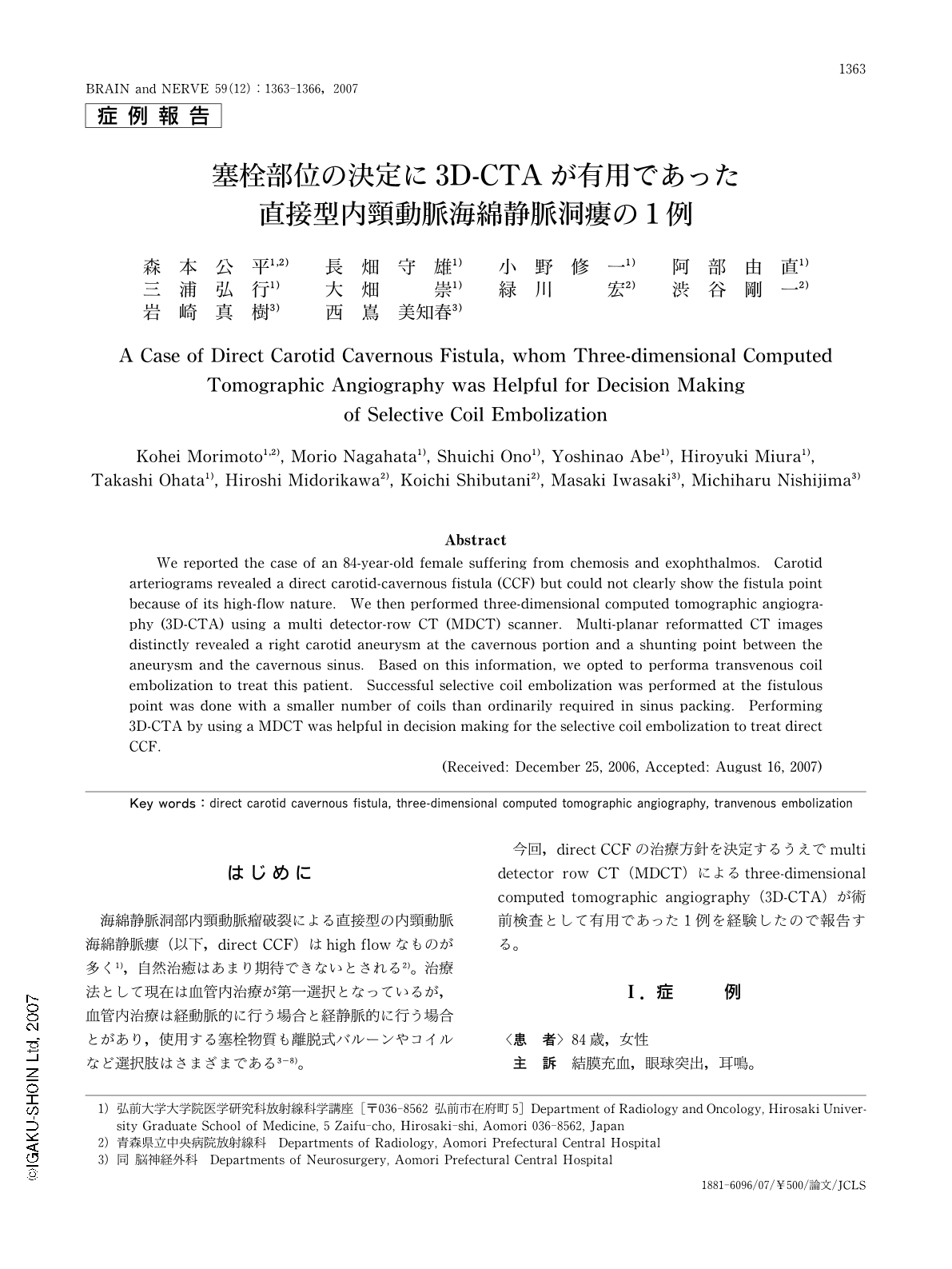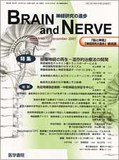Japanese
English
- 有料閲覧
- Abstract 文献概要
- 1ページ目 Look Inside
- 参考文献 Reference
はじめに
海綿静脈洞部内頸動脈瘤破裂による直接型の内頸動脈海綿静脈瘻(以下,direct CCF)はhigh flowなものが多く1),自然治癒はあまり期待できないとされる2)。治療法として現在は血管内治療が第一選択となっているが,血管内治療は経動脈的に行う場合と経静脈的に行う場合とがあり,使用する塞栓物質も離脱式バルーンやコイルなど選択肢はさまざまである3-8)。
今回,direct CCFの治療方針を決定するうえでmulti detector row CT(MDCT)によるthree-dimensional computed tomographic angiography(3D-CTA)が術前検査として有用であった1例を経験したので報告する。
Abstract
We reported the case of an 84-year-old female suffering from chemosis and exophthalmos. Carotid arteriograms revealed a direct carotid-cavernous fistula (CCF) but could not clearly show the fistula point because of its high-flow nature. We then performed three-dimensional computed tomographic angiography (3D-CTA) using a multi detector-row CT (MDCT) scanner. Multi-planar reformatted CT images distinctly revealed a right carotid aneurysm at the cavernous portion and a shunting point between the aneurysm and the cavernous sinus. Based on this information, we opted to performa transvenous coil embolization to treat this patient. Successful selective coil embolization was performed at the fistulous point was done with a smaller number of coils than ordinarily required in sinus packing. Performing 3D-CTA by using a MDCT was helpful in decision making for the selective coil embolization to treat direct CCF.

Copyright © 2007, Igaku-Shoin Ltd. All rights reserved.


